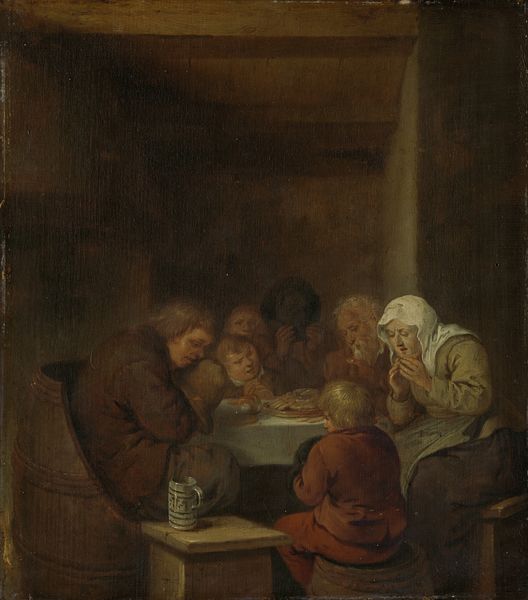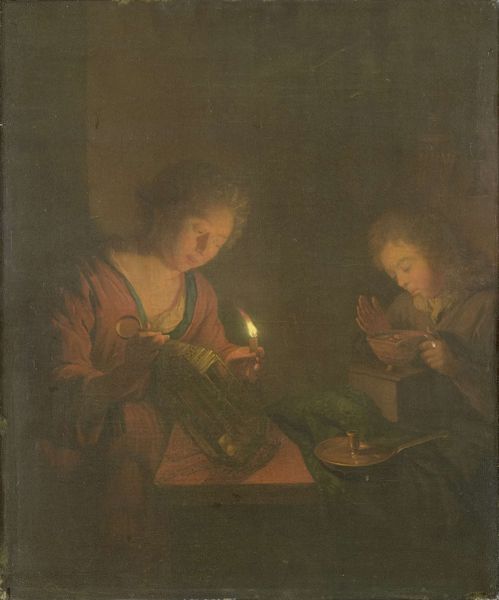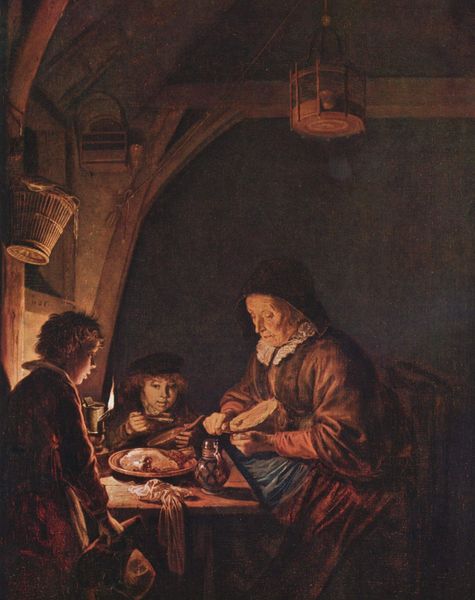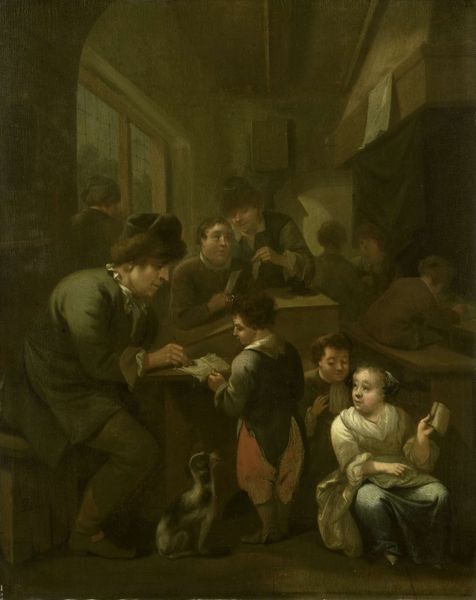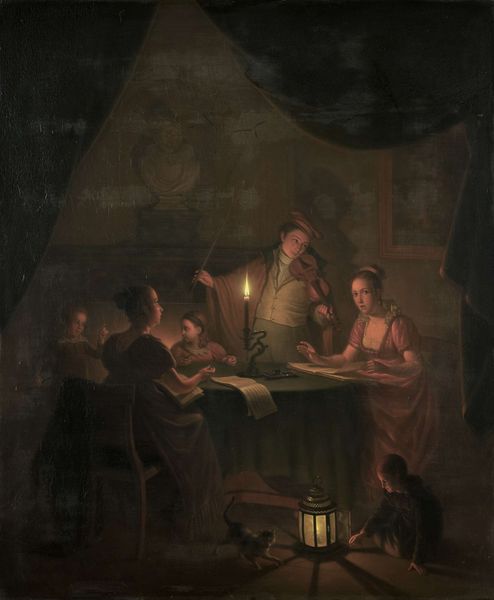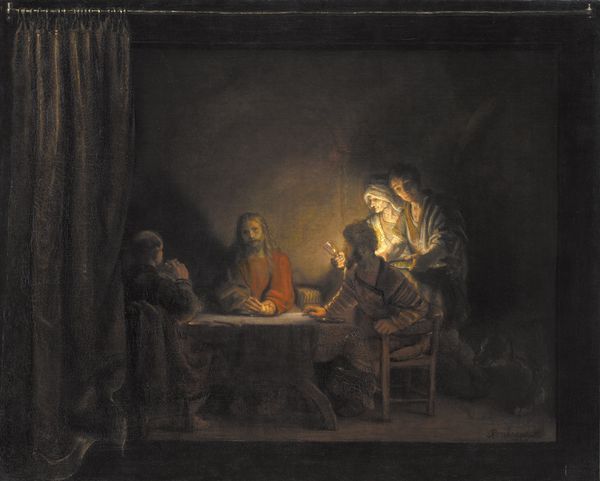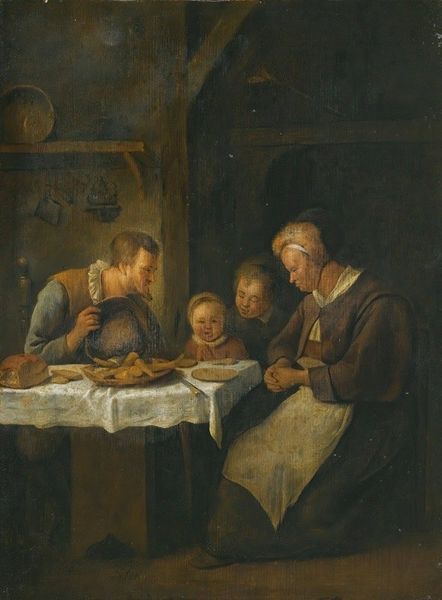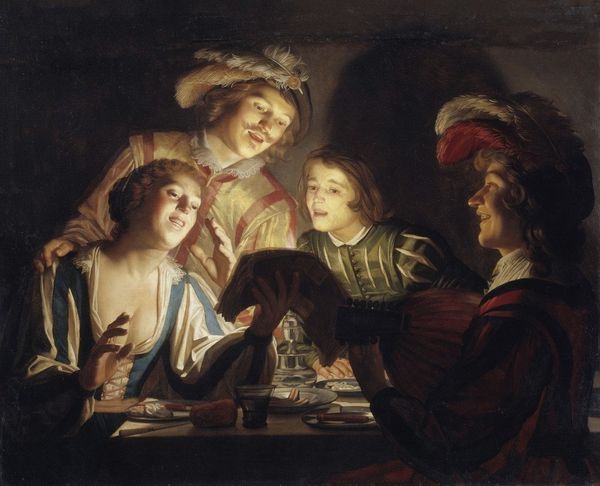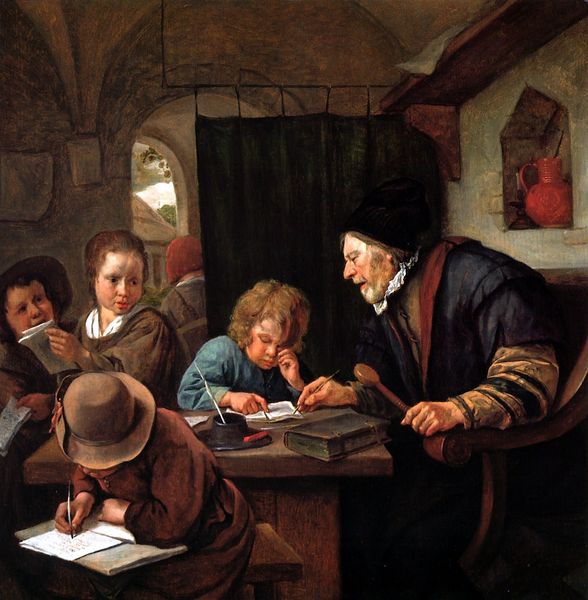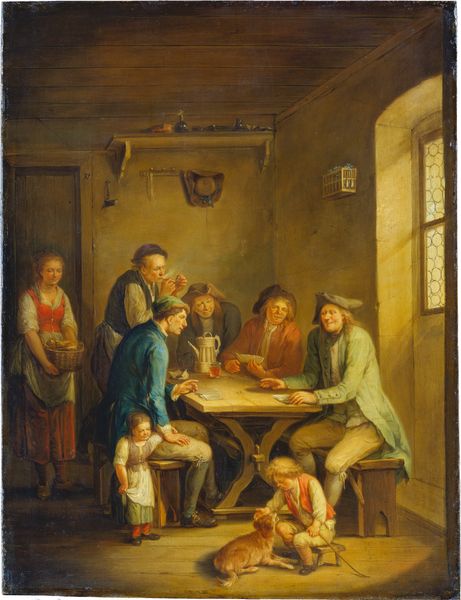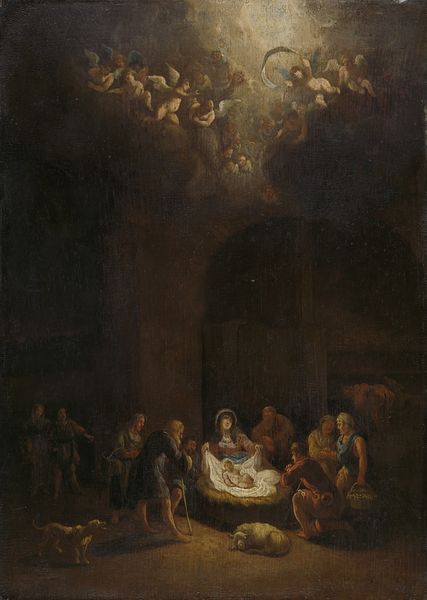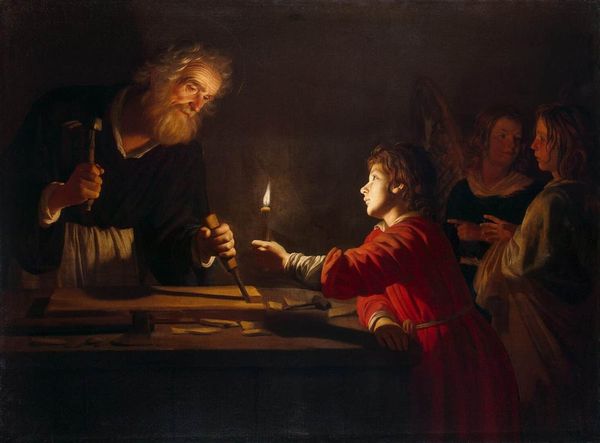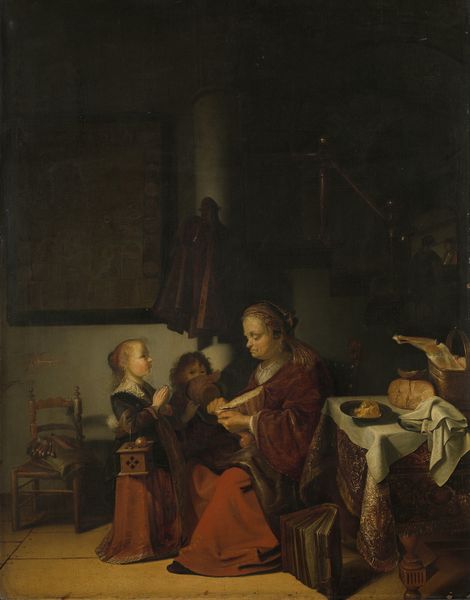
Dimensions: height 80 cm, width 36 cm, depth 8 cm
Copyright: Rijks Museum: Open Domain
Curator: Good morning. Today, we're considering Willem Joseph Laquy's painting, “Triptych: Allegory of Art Training," which he painted around 1770. Editor: Ooh, look at the drama! I immediately think of a Caravaggio, only a bit…cozier? The candlelit scene, the way the figures emerge from the darkness – it feels like stumbling into a secret, intellectual coven. Curator: Absolutely. What’s remarkable here is the precise depiction of artistic education using oil paint. The triptych name is throwing me off a little because I'm only seeing one panel. But yes, these carefully arranged scenes give a sense of…dutiful apprenticeship. Editor: Exactly, let’s talk about the material reality! Look closely at the lantern. Laquy must have dedicated hours rendering the effect of that one source of light: that's no easily sourced, store-bought light. Consider the production—the materials to fuel the flame and, obviously, to paint the canvas itself! Curator: It's all very deliberate, isn’t it? The candlelight isolating each student and their practice; one drawing, the other writing. Notice how each figure engages with different tools, the quill, ink, paper, drawing equipment all lit from what you correctly point out must have been a scarce light source. One even stands behind, offering additional light for everyone. There is so much shared endeavor happening. Editor: You're making me consider those layers of artisanal craftsmanship! The pigments—how labor-intensive it would have been to source, grind, and mix them to achieve this color palette! Not a bit of plastic in sight! How many hands were required for Laquy to accomplish his work, one might muse… Curator: It makes me wonder if this image attempts to reflect on not just what art training means, but how it's supported within the cultural atmosphere? The light suggests a literal and metaphorical illumination, no? Editor: I still marvel at the use of light as the central force. With his delicate treatment of oil paint, he's not merely creating a picture—he's creating an almost tangible experience of artistic labor. We should consider the experience of both those rendering their artworks into physical manifestations, but Laquy too: it's easy to overlook the time and labor required of him to arrive at this result. Curator: A superb observation. Thank you. Editor: My pleasure. Let us to make sure to support today's craftspeople!
Comments
No comments
Be the first to comment and join the conversation on the ultimate creative platform.
